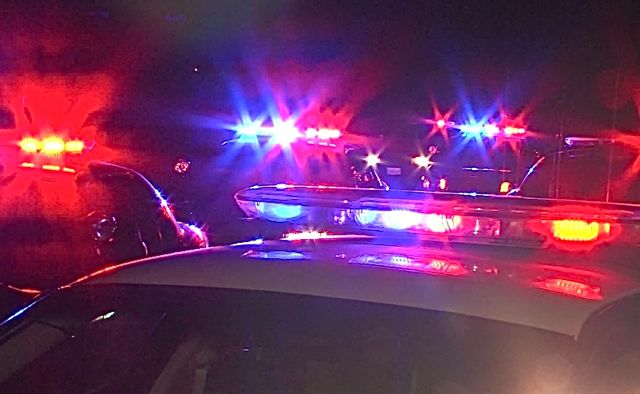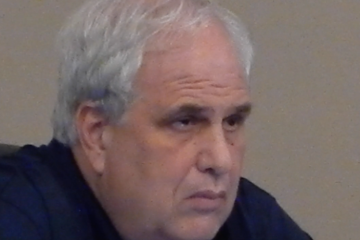Emergency response time questioned in death

Sept. 22, 2014 PLYMOUTH EAGLE.
Plymouth Michigan News
By: Don Howard
Staff Writer
The recent death of a 67-year- old Northville man who suffered cardiac arrest just after midnight on a weekday last month has prompted questions regarding the actual response time of emergency help in the incident.
Emergency response administrators and experienced Advanced Life Support personnel have questioned the response time to the 911 call that was answered at the Northville Fire Department at 12:02 a.m. reporting that the man was unconscious, but breathing. Experts and Emergency Medical Technicians interviewed asked not to be identified fearing retaliation. They came forward, they said, because the issue is one of public safety, a basic concern in their professional lives. They have examined the official incident reports obtained by a Freedom of Information Act request filed by The Eagle last week.
The victim was experiencing cardiac arrest, a chaotic condition known as ventricular fibrillation. According to medical experts, he had just 6 minutes to live. A shock with a defibrillator within that time usually will restore the heart’s rhythm and a victim can still survive if qualified paramedics restore his breathing and administer key drugs, such as adrenaline, according to highly experienced paramedics.
When the call came in, the Northville Township emergency dispatcher transmitted an electronic page and sent an emergency tone to summon available first responders from the 55 paid on-call City of Northville volunteers. According to official reports, following the desperate call to 911, the fire department, the police department and a private ambulance company all were dispatched within 3 minutes to the address on Main Street in downtown Northville, just two blocks from the fire station.
The city fire department ambulance, stored at the fire station on Main and Wing Street, was ready for any two of the paged emergency medical technicians to arrive, the minimum number of personnel required by to operate the vehicle.
The private ambulance requested was a Community EMS Ambulance Co., Advanced Life Support unit with paramedics, the appropriate personnel to administer life-saving measures.
By the time two required Northville Fire Department Basic Emergency Medical Technicians (EMTs) got to the station and drove the ambulance two blocks north to the man in critical distress, 10 minutes had elapsed from the time of the initial 911 call. When they arrived at the Main Street, address they found the victim undergoing resuscitation efforts (CPR), which was started 6 minutes earlier by one of the three Northville City Police officers already on the scene. The time was 12:12 a.m. and the Community EMS paramedics coming from the 11 Mile Road and Beck station in Novi had not yet arrived to assist and administer necessary medications and the care that only trained paramedics can perform. While police officers had responded within four minutes, they were able to provide only basic first-aid procedures, such as CPR.
At 12:16 a.m., 14 minutes after the 911, call the Community EMS ambulance with the paramedics arrived at the upstairs location to find the victim had died.
Most experts agree that four responders, at least two trained in Advance Life Support and two trained in Basic Life Support, are the minimum required to provide the necessary life saving measures to cardiac arrest victims. Experts say two firefighters to provide CPR, one to prepare the Automated External Defibrillator (AED) and analyze the results of an electrocardiogram (ECG) report, and one to prepare for and initiate advanced cardiac life sup- port measures, such as advanced airway management, I.V. therapy and pharmacological interventions, are the minimum number required to provide the necessary care in a cardiac arrest situation. An important factor in the survival of the patient, the experts said, is not only how quickly paramedics arrive at the scene, but also how quickly they begin administering treatment. Recognized national studies predicting cardiac arrest survival rates link response time to the probability of survival. According to the national model, in the best-case scenario a cardiac arrest victim has a 67 percent chance of survival within the critical first 6 minutes.
Few municipal officials actually know exactly how long their emergency crews take to reach cardiac arrest victims and most are selective about how they report that performance. Many report only the response time it takes for the emergency crew to arrive or the arrival of a police officer, usually first on the scene. Northville Township Department of Public Safety Dispatch, which is responsible for dispatching Northville City Fire Department, is unusual as all dispatch times, to the second, from the first call for help, are recorded, tracked and reported.
Experts said that response times and ratings can be deceiving to the public because having the appropriate personnel on the scene to administer life-saving measures is the most important factor in adequate emergency response, according to medical professionals and paramedics interviewed by The Eagle.
In Plymouth, city officials contract fire and emergency medical services with the Northville City Fire Department even though the two communities are not contiguous.
According to Northville City Fire Chief Steve Ott, there are no established boundaries or rules regarding the maximum distance of residency from the city limits for volunteers.
“Each case is handled on an individualized basis…some (volunteers) live outside of town and work inside town. We don’t have a set line in the sand,” he said.
Until 2011, the City of Plymouth and Plymouth Township operated as a joint community fire department. After an acrimonious split between those two, officials from the cities of Plymouth and Northville combined fire and medical emergency services. The cities use separate ambulance companies to handle the Advanced Life Support, something not offered by the Northville Fire Department.
The City of Plymouth has a system in place that City Manager Paul Sincock describes as a “three-tiered response,” where police and the outside ambulance company, Huron Valley Ambulance, and the Northville Fire Department are simultaneously dispatched to an emergency. Some of the Plymouth police officers are also trained as fire department personnel and can also perform as a firefighter-first responder.
The City of Plymouth recently received an improved rating from the Insurance Service Office, Inc. (ISO) following an evaluation of the city fire services. According to ISO, a fire department could have paid-on-call volunteers who are retirees, or other staff with little or no full-time experience or training, without impact on the rating.
Plymouth Township still operates with a full-time fire department although the staff has been reduced to 18 full-time firefighters. All regular firefighters are trained as paramedics and can perform Advanced Life Support. In addition the township has seven part-time firefighters, two of whom are paramedics who work 12-hour shifts from 8 a.m. until 8 p.m. The fire station that served the largest township subdivision, Lake Pointe, remains closed since the staffing cuts.
The City of Romulus has eight career firefighters and a support staff of eight paid-on-call firefighters. Canton Township has a full-time professional fire department, as does Northville Township, and both offer paramedic and Advanced Life Support. Wayne, Westland and Inkster also are staffed with full-time, non-volunteer firefighters and also offer Advanced Life Support and paramedic services. Van Buren Township which serves both the township and the City of Belleville has both full-time and paid on-call staff and does not offer Advanced Life Support.
Plymouth Voice.



